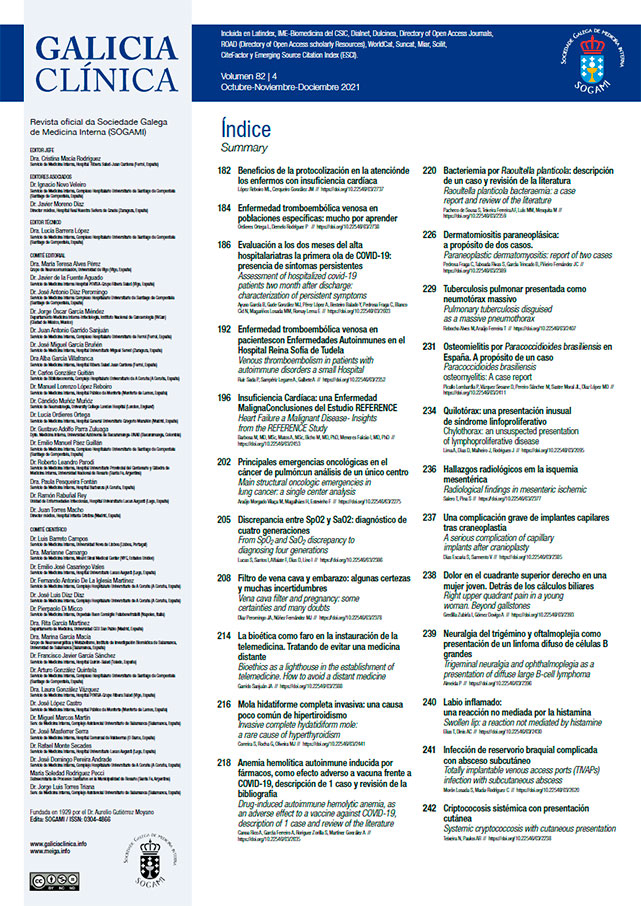Abstract
INTRODUCTION. Lung cancer is the leading cause of structural oncologic emergencies (OE). The clinical outcome of patients with OE is often poor and mortality is high. The aim of this study was to evaluate the incidence, clinical presentation and outcomes of patients with structural OE in patients with lung cancer. METHODS. Retrospective cohort study involving all lung cancer patients admitted with a structural OE (superior vena cava syndrome (SVCS) and metastatic spinal cord compression (MSCC)) between January 1, 2015 and November 30, 2019. Long-term outcome was evaluated at 90 days after de OE and during the follow-up time. A comparative analysis between SVCS group and MSCC was also made. Data analysis was performed using the SPSS v.25.0.0 with a significant level of α=5%. RESULTS: Of the 610 patients with the diagnosis of lung cancer, and 35 (~6%) had an OE: 16 a SVCS and 19 had a MSCC. OE was the first manifestation of cancer in more than 50% of patients (8 in SVCS group and in 12 in MSCC group). The mortality rate was 66% 90 days after OE and 97% at the end of follow up. Patients with MSCC had worse outcomes when compared to SVCS, with more mortality in the first 3 months and more morbidity. CONCLUSION. In this study, structural OE was the first manifestation of lung cancer in more than 50% of patients and its occurrence is associated with a worse prognosis. We need to be aware of this situation, especially in the emergency department, in order to minimize those consequences. Future studies are needed to determine the impact of early diagnosis, treatment patterns on OE outcomes and strategies for reducing structural OE related costs.Galicia Clínica by Sociedad Gallega de Medicina Interna is licensed under a Creative Commons Reconocimiento-NoComercial-SinObraDerivada 4.0 Internacional License.
Created from galiciaclinica.info.

